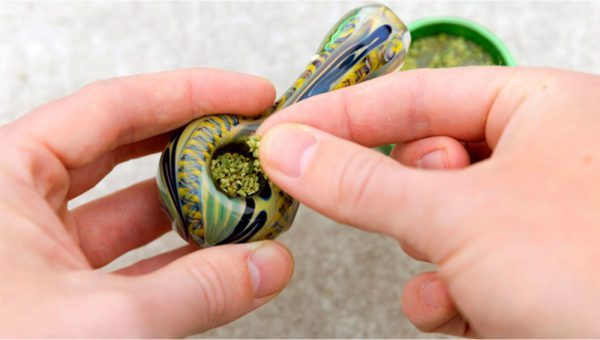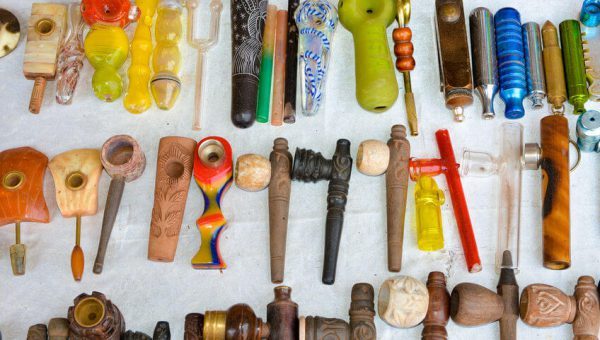Are you trying to figure out how to identify a male cannabis plant? Whether you’re a seasoned grower or just getting started with cannabis cultivation, knowing how to identify male plants is an important skill. In this article, we’ll provide an overview of the cannabis life stages and the characteristics of male cannabis plants, as well as tips for identifying male plants from females. We’ll also discuss the many uses and benefits of male cannabis plants, from breeding to pest control and beyond. By the end of this article, you’ll have a better understanding of how to identify a male cannabis plant and why they are an important part of the cannabis cultivation process.
How to identify a male cannabis plant?
Cannabis plants have a distinct life cycle and exhibit several key characteristics that make males easily distinguishable from females. Understanding the life cycle and identifying the gender of your cannabis plants are both essential for a successful grow operation, whether it’s for breeding new strains, producing seeds, or harvesting sensimilla.

Cannabis life stages
Cannabis plants have several distinct stages in their life cycle. These stages include germination, seedling, vegetative, flowering, and harvesting.
Germination. During the germination stage, the cannabis seed begins to sprout and develop into a small plant. This stage typically lasts for a few days to a week.
Seedling. Next is the seedling stage, during which the plant continues to grow and develop its root system. At this point, the plant will have a few sets of leaves and may begin to grow taller. This stage typically lasts for a few weeks.
Vegetative. Once the plant has reached the vegetative stage, it will begin to grow more quickly and develop a larger root system. This is also when the plant will start to develop its distinctive characteristics, such as the shape and size of its leaves. The vegetative stage can last for several weeks or even months, depending on the strain and growing conditions.
Flowering. Once the plant has reached its desired size, it will enter the flowering stage. During this stage, the plant will begin to produce flowers, or buds, which contain the high-inducing compounds sought after in cannabis. This stage typically lasts for several weeks to a few months.
Finally, once the flowers have reached their desired size and potency, the plant will be ready for harvesting. At this point, the flowers can be cut from the plant and dried, cured, and processed for use.

How to identify male cannabis plants from females?
Male cannabis plants have several distinctive characteristics that can help to identify them. Some of the most notable characteristics of male cannabis plants include the following:
Leaves. Male plants tend to have wider, more rounded leaves, while female plants have more narrow and pointed leaves.
Growth and height. Male plants tend to grow taller and more quickly than female plants, so if you notice that one of your cannabis plants is growing much faster than the others, it may be a male.
Preflowers. Preflowers are small, embryonic flower structures that develop on cannabis plants before the plant reaches sexual maturity.
Male cannabis plants typically produce small, round balls that are clustered together. These structures will typically be located at the base of the plant, near the stem. Male preflowers may also have small, oval-shaped structures called pollen sacs attached to them.
Female preflowers, on the other hand, have a more elongated, teardrop-shaped appearance. They are typically arranged in a more loose and open pattern on the plant, and may have small white hairs called pistils attached to them. Female preflowers are typically located near the tops of the plant, near the branches and leaves.
It’s important to note that preflowers can be difficult to identify, especially on young plants.
Pollen sacs. If you’re still unsure, you can also look for pollen sacs on the plant, which are only found on male plants. These sacs are typically located on the underside of the leaves and are oval-shaped.
Bear in mind that not all male cannabis plants will exhibit all of these characteristics, and some plants may be harder to identify than others.
What are the uses and benefits of male cannabis plants?
Are you curious about the uses and benefits of male cannabis plants? While they may not produce the sought-after flowers of female plants, male cannabis plants have their own unique set of uses and benefits. From breeding and pest control to providing a source of THC and CBD, male cannabis plants can be an important part of any cannabis cultivation program. Read on to learn more about the many uses and benefits of male cannabis plants.
Breeding. Male cannabis plants are essential for breeding, as they are necessary for producing viable seeds. When a male cannabis plant pollinates a female plant, the female plant will produce seeds that can be used to grow new cannabis plants.
Male cannabis plants also have other benefits for breeding. For example, male plants typically grow more quickly and vigorously than female plants, which can be helpful in the early stages of breeding when plants are being selected and propagated. Additionally, male plants with desirable genetic traits can pass that on to the next generation, such as improved growth rates, resistance to pests and diseases, and high levels of THC or other desirable compounds.
Pest control / Companion plant. Male cannabis plants have a strong, pungent odor that can protect other plants by keeping pests at bay. In addition to their use as pest control, male cannabis plants can help improve the overall aesthetic of a garden or outdoor space by adding additional height and visual interest.
Cannabinoid and nutrient contents. Contrary to popular belief, male cannabis plants can produce THC and CBD, but generally much lower than that of female plants. They also contain several other cannabinoids and nutrients, which consumers can reap through cannabis-based edibles and concentrates, among others.
The health-conscious can make tea from the leaves and snack on slightly roasted cannabis seeds. Male cannabis plants are also optimal for juicing, but avoid using thicker stalks and bigger leaves as they impart a strong bitter taste. If you have plenty of male weed plants, another option is to make extracts and concentrates.
Fiber. Male cannabis plants can be a valuable source of fiber, which can be used for various purposes. The stems and leaves of male cannabis plants are rich in cellulose, which can be extracted and processed into a variety of fiber products.
One of the primary benefits of using male cannabis plants for fiber is that they grow more quickly and vigorously than female plants. This means that male plants can be harvested more quickly and efficiently, providing a reliable source of fiber. Additionally, male cannabis plants are typically less affected by pests and diseases than female plants, which can help to improve the overall quality of the fiber.
Male cannabis fiber can be used in a variety of applications, including the production of clothing, paper, and other textiles. It can also be used to produce bioplastics, which are environmentally friendly alternatives to traditional plastics.
Compost. If you don’t have other uses for cannabis male plants and plan to discard them, another option is to use them as compost and put all the nutrients back into the earth. Cannabis plants, like all plants, contain a variety of nutrients that can be beneficial for the soil, and adding male cannabis plants to your compost heap can help to improve the overall health of your garden.
Don’t throw the males just yet!
Male cannabis plants are an essential part of the cannabis cultivation process, with their own unique uses and benefits. Whether using them for breeding, pest control, or making extracts, knowing how to identify a male cannabis plant is a valuable skill for any grower. By learning about the cannabis life stages and the characteristics of male plants, you can confidently identify male plants and take advantage of their many uses and benefits.


